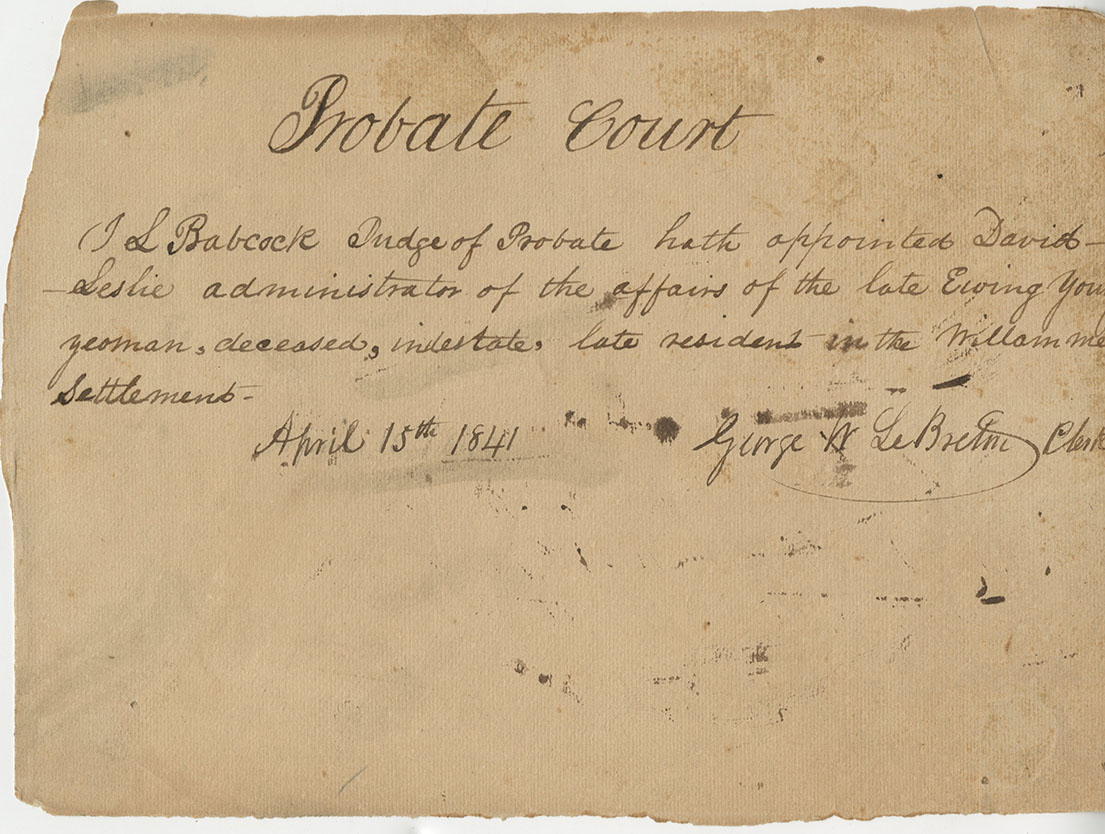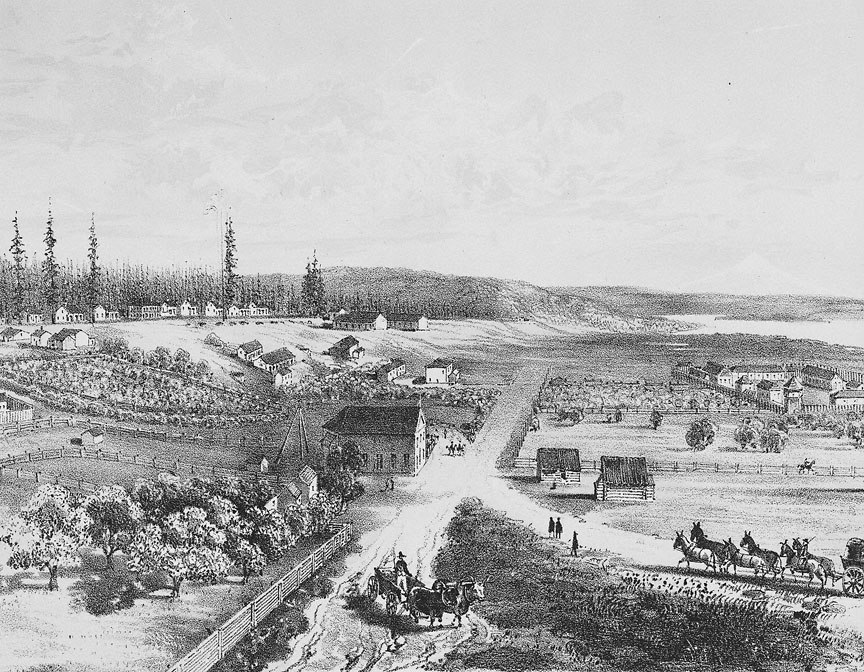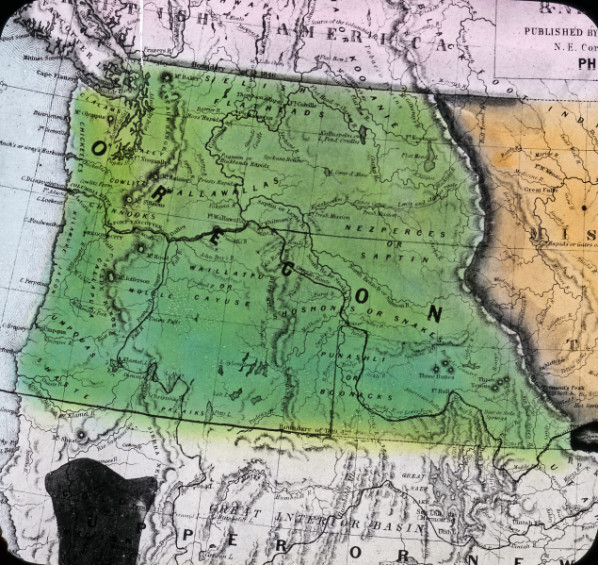Ewing Young was a Santa Fe trader, a Rocky Mountain man, a California livestock trader, and one of the first Americans to permanently live in Oregon. The need to settle his estate after his death in 1841 led directly to the creation of Oregon’s first Provisional Government, five years before the United States gained possession of the region.
Born in about 1796, Young was raised near Jonesboro, Tennessee, where he mastered farming, marksmanship, carpentry, and hunting and trapping. He was literate and learned bookkeeping. In May 1822, he invested in William Becknell’s second commercial venture to New Mexico, after which the Santa Fe trade boomed. (Becknell was the first American to reach New Mexico after Mexico won independence in 1821 and legalized trade with the United States.) Taking advantage of the new opportunities, Young traded with New Mexicans from 1822 to 1829 and dispatched trapping expeditions to the Pecos, Gila, and other rivers.
Young resided at Taos, where in 1828 he married Maria Josefa Tafoya. The next year, he traversed the Old Spanish Trail to Mission San Gabriel, returning to Taos in May 1831 to be baptized a Catholic, a prerequisite for a Mexican passport. Abandoning his wife and young son, Joaquin, he left New Mexico for California, where from 1832 to 1834 he trapped and traded furs, speculated in horses, and hunted sea otters. Mindful of the increasing number of American and British Canadian fur hunters and aware of a disease that was killing thousands of California Natives, Young decided to move to Oregon.
At San Diego in the spring of 1834, Young met Hall Jackson Kelley, a recently arrived American promoter whose screeds agitated the Oregon Question, although Kelley had never actually seen Oregon. When Kelley asked Young to lead him to the Columbia River, Young declined; but when they met again two months later at Monterey, he let Kelley join the party of sixteen men he had assembled for the northern trek.
Ignoring Young’s admonitions to avoid violence against Natives, some of the group’s belligerent trappers murdered several Indians along the way (including in the Rogue River Valley), causing bloody confrontations and sowing internal discord. When they reached Fort Vancouver in October 1834, Chief Factor John McLoughlin presented Young a letter from California Governor José Figueroa indicting Young and his men as horse thieves and requested that McLoughlin seize their livestock. McLoughlin took no legal action against Young but refused to offer him any assistance. Undaunted, Ewing Young stayed in Oregon, and soon occupied roughly fifty square miles of forested prairie in the Chehalem Valley, having “determined to make a fortune off the growing grass.”
Young’s neighbors included retired HBC men and families at French Prairie, American beaver hunters, and missionaries who arrived in 1834–1836. He developed farming and horse-ranching operations and built a sawmill. He planned to build a distillery, but when the HBC and local missionaries objected, Young relented and instead decided to import California cattle to the valley. After forming the Willamette Cattle Company, a joint stock enterprise with missionaries, trappers, and French Canadians in early 1837, Young departed for California. He returned in October with 630 head of cattle, predominantly heifers.
Between 1838 and 1841, Young expanded his enterprises. His sawmill on Chehalem Creek produced Douglas-fir planks and oak flooring. He built a gristmill, fenced his land, enlarged his wheat-farming operations, and mended his relationship with the HBC. In 1839, he and his workers discovered fossil mammoth remains on the Willamette River, the earliest paleontological find reported in the Pacific Northwest.
During an unusually frigid winter in late 1840, Young’s health rapidly declined, and he drifted into delirium. In mid-February 1841, he died intestate, with no known widow or children to claim his estate. The absence of a will precipitated a seminal moment in Oregon history. During several meetings following his burial, a committee comprised of a “‘Supreme Judge,’ a clerk, a ‘High Sheriff,’ and three constables” agreed that Young’s case mandated the formation of a “government.” Applying New York State laws, Judge Ira L. Babcock steered the legal process to completion and created Oregon’s Provisional Government.
Young’s estate fully settled in 1854 when Ewing Young’s son, Joaquin, arrived to claim his share, about $5,000 (about $146,000 in 2020 dollars). Young’s legacy lies in the role his estate played in the formation of Oregon’s first government, which provided a foundation for future territorial and state structures. Few individuals have played so singular a role in Oregon history.
-
![]()
Original document assigning David Leslie as executor of Ewing's estate, 1841.
Courtesy Oregon Hist. Soc. Research Lib., Mss 1226
Related Entries
-
![French Prairie]()
French Prairie
Located in Oregon's mid-Willamette Valley, French Prairie was resettled…
-
![Hudson's Bay Company]()
Hudson's Bay Company
Although a late arrival to the Oregon Country fur trade, for nearly two…
-
![John McLoughlin (1784-1857)]()
John McLoughlin (1784-1857)
One of the most powerful and polarizing people in Oregon history, John …
-
![Oregon Question]()
Oregon Question
“The Oregon boundary question,” historian Frederick Merk concluded, “wa…
-
![Willamette Cattle Company]()
Willamette Cattle Company
In January 1837, settlers in the Willamette Valley organized the Willam…
Related Historical Records
Map This on the Oregon History WayFinder
The Oregon History Wayfinder is an interactive map that identifies significant places, people, and events in Oregon history.
Further Reading
Carter, Harvey Lewis. “Dear Old Kit”: The Historical Christopher Carson. Norman: University of Oklahoma Press, 1968.
Hafen, LeRoy R., and Ann W. Hafen. Old Spanish Trail: Santa Fe to Los Angeles. Glendale, CA: Arthur H. Clark, 1954.
Holmes, Kenneth L. Ewing Young: Master Trapper. Portland, OR: Binfords & Mort, 1967.






